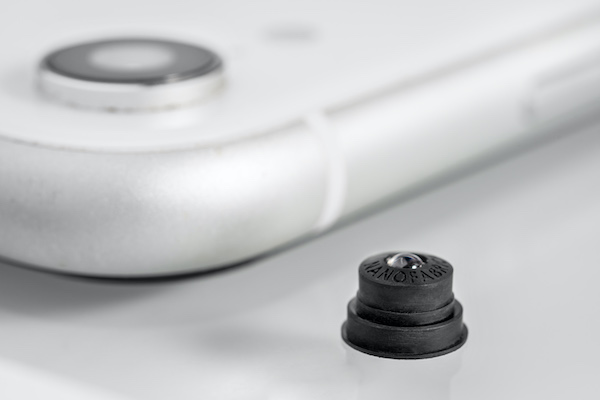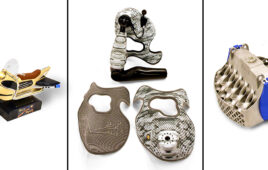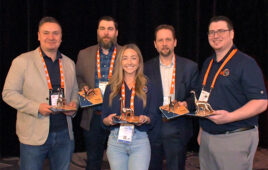When you have a need for micro-sized parts, one 3D printer that can meet this need is the Tera 250 AM system, from Nanofabrica. Like other 3D printers, this additive system is agile and flexible. The need for tooling is usually minimal so designs can be altered with little expense. However, this system offers the potential for mass customization in the micro-manufacturing sector. Plus, OEMs can reduce their reliance on economies of scale as the technology makes full production runs measured in thousands as inexpensive as producing one.
The printer’s build envelop is 5 cm x 5 cm x 10 cm.
Take a look at a few parts made at the micro-level.
Micro-lens housing
This industrial micro-lens housing, like those you find in smartphones, has an overall dimension of X 6.586 mm, Y 6.586 mm, and Z 4.081 mm to accommodate a 2.00 mm diameter optical lenses. The dimensions of the housing need to be accurate for the precise positioning of the lens, and the overall part size must be small to fit into the slim mobile phone housing.
With the Tera 250 AM System, the lens housings can be personalized for high-end customers without tooling or post-production assembly, which significantly reduces the time to market. In addition, they can incorporate properties and geometric complexity that would either be impossible of too expensive to achieve using conventional manufacturing processes.
These Tera 250 produced lens housings have extremely sharp and accurate features and fine details, and exceptionally smooth surfaces.
Mold insert
Another part is a mold insert. Overall dimensions are X 11.659 mm, Y 22.248 mm, and Z 19.521 mm. The material used for this mold insert exhibits high-temperature resistance, high stiffness and robustness, and high levels of detail and surface smoothness due to 1-micron layer thickness and 1.9-micron pixel resolution.
Using AM to make injection molds is a cost-effective process when contemplating low volume runs, as it requires no expensive tooling, and fast turn-around times are achievable. In addition, AM facilities simple changes and design iterations speedily and at minimal expense.
Nanofabrica
www.nano-fabrica.com
Filed Under: Make Parts Fast






